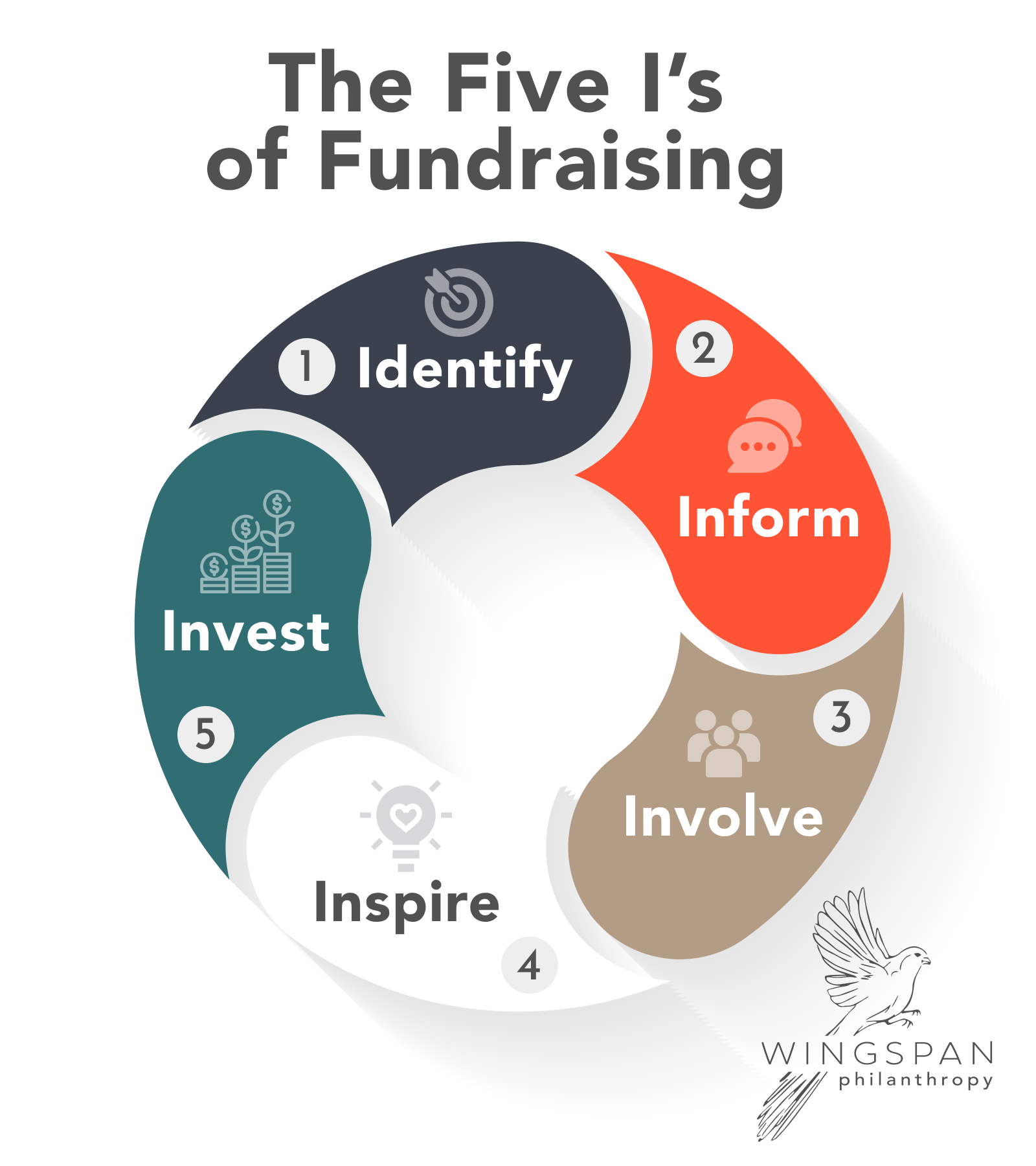There’s a misconception in fundraising that I’d like to address. To be honest, I believed it myself when I first started out.
In our efforts to win donors’ hearts, we mistakenly believe that their journey is linear. In other words, it’s easy to see the whole process as start to finish, Point A to Point Z, beginning to end.
But after 30 years of working in this sector, I’ve learned that isn’t the case, and it didn’t take long to figure it out. In fact, I learned it from a small napkin, a pen, and someone I looked up to.
The Five I’s
Back in 1992, a young Sterrin was attending a conference for nonprofits, hoping to be in the right rooms with the right people. At this conference, I got to hear Jack Donovan speak, which is a fond memory for me to this day.
After we all broke for lunch, I took the opportunity to sit next to Jack. I learned more about his process—his “secret sauce,” if you want to call it that. At one point, he did something that taught me everything I needed to know about the nonprofit world in about ten seconds.
He grabbed a napkin, took out a pen, and wrote five words. I affectionately call these the “Five I’s:” I don’t really remember the rest of our conversation, but I distinctly remember that napkin and these five words:
Identify, Inform, Involve, Inspire, and Invest.
Soon after the conference ended, Jack snail-mailed me the slide from his presentation with these five words on it. Everything in my professional journey changed after that moment. Jack played an irreplaceable part in the trajectory of my career, and I’m so thankful for his generosity.
The Donor Continuum
Why are these “Five I’s” important? Because they fly in the face of how we typically think of a donor’s journey. It isn’t a straight line, like we talked about earlier. It’s a continuum—a circle, if you will.
Each one of your donors sits on one of those words at any given time. Therefore, the job of a fundraiser is to operate on that continuum. We need to understand where each donor is on his or her journey, then respond accordingly.

For example, you need to identify who you should be talking to. You need to inform them about the mission of the organization, your specific need, and the impact of their participation. By involving in the process, the throughput should cultivate their inspiration. They should be so excited by your work that inviting them—the “ask”—should be the easy part.
Every donor relationship travels around this circle, and the better you understand this circle, the more ready you’ll be to ask the right questions.
After 30 years of working with nonprofits, I know this approach works, and it works in many different ways to inform our work.
It’s so easy to fixate on getting the donor “across the finish line” that we forget about the donor themselves.
Everyone wants to “win” the donor and secure their funding, but we can’t forget that donors are people, too. We need to earn their trust before we can earn their dollars. The better you understand where your donors sit on this continuum, the better you’ll serve them. And yes, the gifts will come.
How We Can Use the Five I’s
How do we use this approach in our organizations? For me, I try to remember Jack’s continuum, then consider the following questions to get the conversations started:
If tech is going to exist in this capacity over the next ten years, which part of the continuum is it serving, supporting and expanding?
How does tech help identify our best donors?
How am I communicating with my prospects to better inform them?
How am I involving my donors and managing my volunteers?
How can I use technology to better inspire my donors?
I believe that the Five I’s should be an overlay for everything we do in fundraising. It gives us a framework to work through, a lens through which we can understand everything our donors are feeling.
In fact, I would go a step further: The Five I’s should be our standard. If your mission doesn’t align with the Five I’s, then you probably shouldn’t pursue it in the first place! That’s how powerful this framework is.
Ask yourself where you are with a particular donor, where you are with your project, and how this relationship can serve what you’re trying to do.
We have the obligation and privilege to serve our organizations and donors every day. Take a closer look at your fundraising situation, then figure out where you’re having the most difficulty in this process. Inspect and improve that aspect of the continuum!
Trust me, these I’s will help you ground yourself in the work you need to do.

